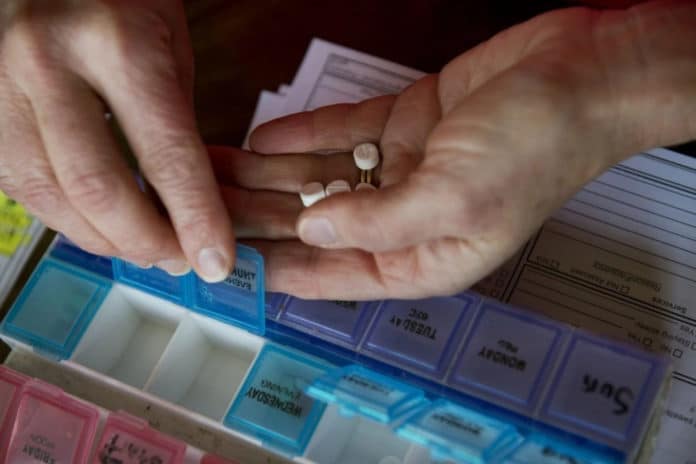A third of hospitals reported that drug price increases had a “severe” effect on their budgets and ability to manage costs in the last two years, according to a new survey funded by organizations that lobby on behalf of hospitals.
The survey included responses from more than 700 community hospitals and two group purchasing organizations that negotiate prices on behalf of 1,400 hospitals. The findings highlight how price increases on individual drugs can have a big impact on hospitals that are large purchasers. For example, price increases on the decades-old pain reliever acetaminophen from 2013 to 2015 — from a unit price of $13 to $30 — drove spending from $43 million to nearly $100 million over two years, according to the survey.
The survey was funded by the American Hospital Association and the Federation of American Hospitals, and it was analyzed by the University of Chicago.
Sudden price hikes on two hospital-administered heart drugs drew scrutiny to Valeant Pharmaceuticals International last year. Erin Fox, director of the Drug Information Service at the University of Utah Health Care, told Congress that where she works, the Valeant drug Isuprel had been removed from crash carts that are deployed across the system for use in emergencies, after a price hike that would have brought hospital spending on the drug to $1.6 million. Instead, the drug was brought to “codes,” when a patient went into cardiac arrest, in pharmacy backup boxes.
But the report sought to outline the scope of the problem in greater detail, and it revealed that a variety of older drugs have undergone hikes and driven up spending. One apparent problem for hospitals is that it can be hard to predict which ones will.
Sometimes, a change in price was triggered when a drug changed hands. The report highlights Daraprim, a drug for a parasitic infection that landed in Congress’s crosshairs after Turing Pharmaceuticals hiked the price from $13.50 to $750 a pill. It also mentions a leukemia drug called Oncaspar that was approved more than two decades ago and increased in price by nearly $10,000 when the company Baxalta acquired it.
But the report also pointed out that temporary shortages can drive up the price of a drug – and when problems are resolved, the price can stay high.
And the problem isn’t just the most expensive drugs, which hospitals may already be thinking about in their budgets. An anesthesia drug called ephedrine sulfate went from $6 in 2013 to $24 in 2015, and spending more than quadrupled to $34.6 million. A drug called glycopyrrolate used before surgery to dry secretions went from $5 to $23 a unit over two years, driving spending up from $5 million to $73 million.
“You can pretty much ballpark medications that were already high-priced, but it’s for the ones that were $5 last year and $300 this year. Those are the ones that are making it very difficult to budget,” an unnamed pharmacy vice president is quoted in the report.
According to the survey, drug spending on hospital-administered inpatient drugs are increasing faster than retail drug spending.
“This analysis is a real wakeup call on health care spending,” Chip Kahn, president of the Federation of American Hospitals, said in a statement. “It confirms what local hospital administrators recognize as a serious and growing problem for their patients.”







